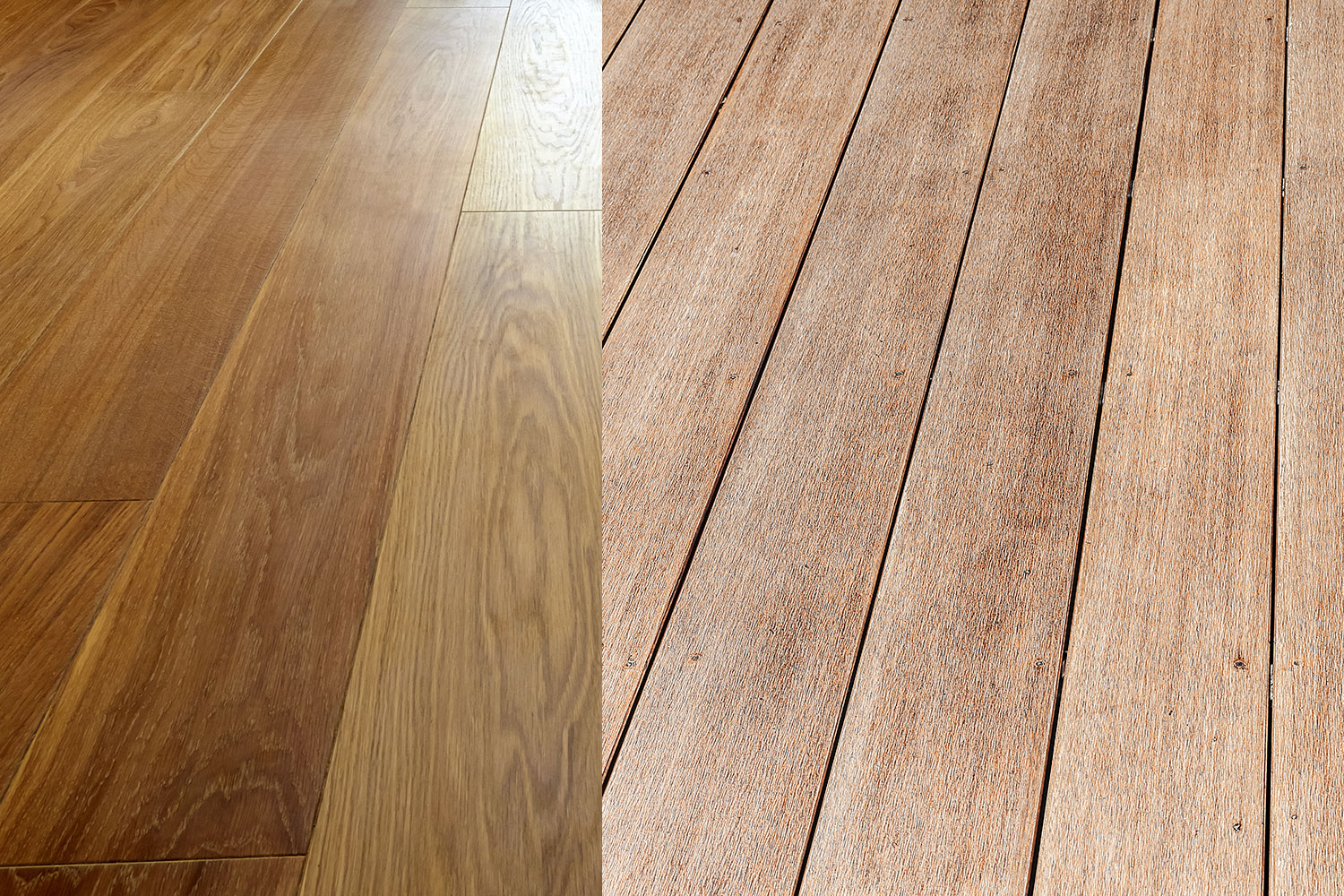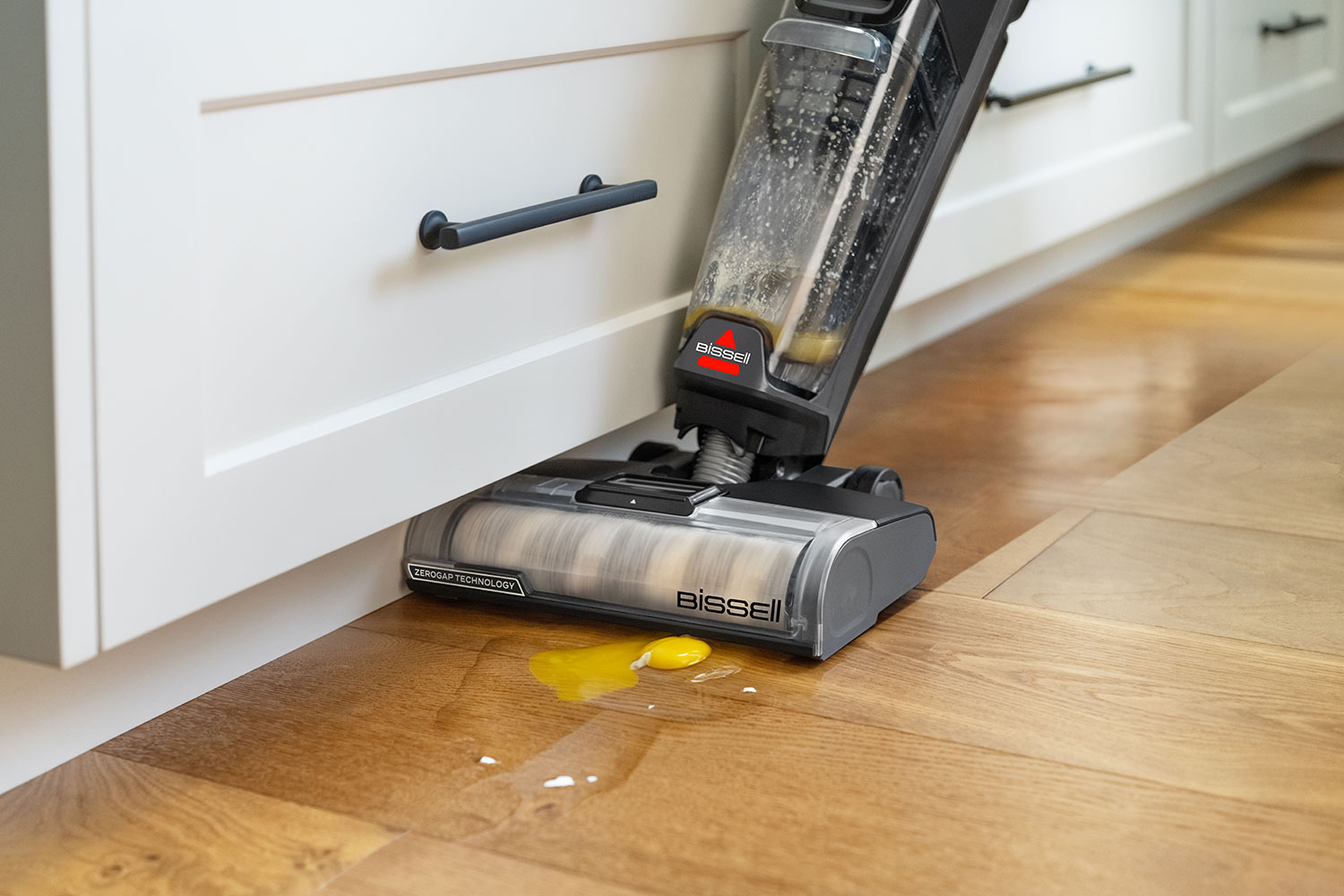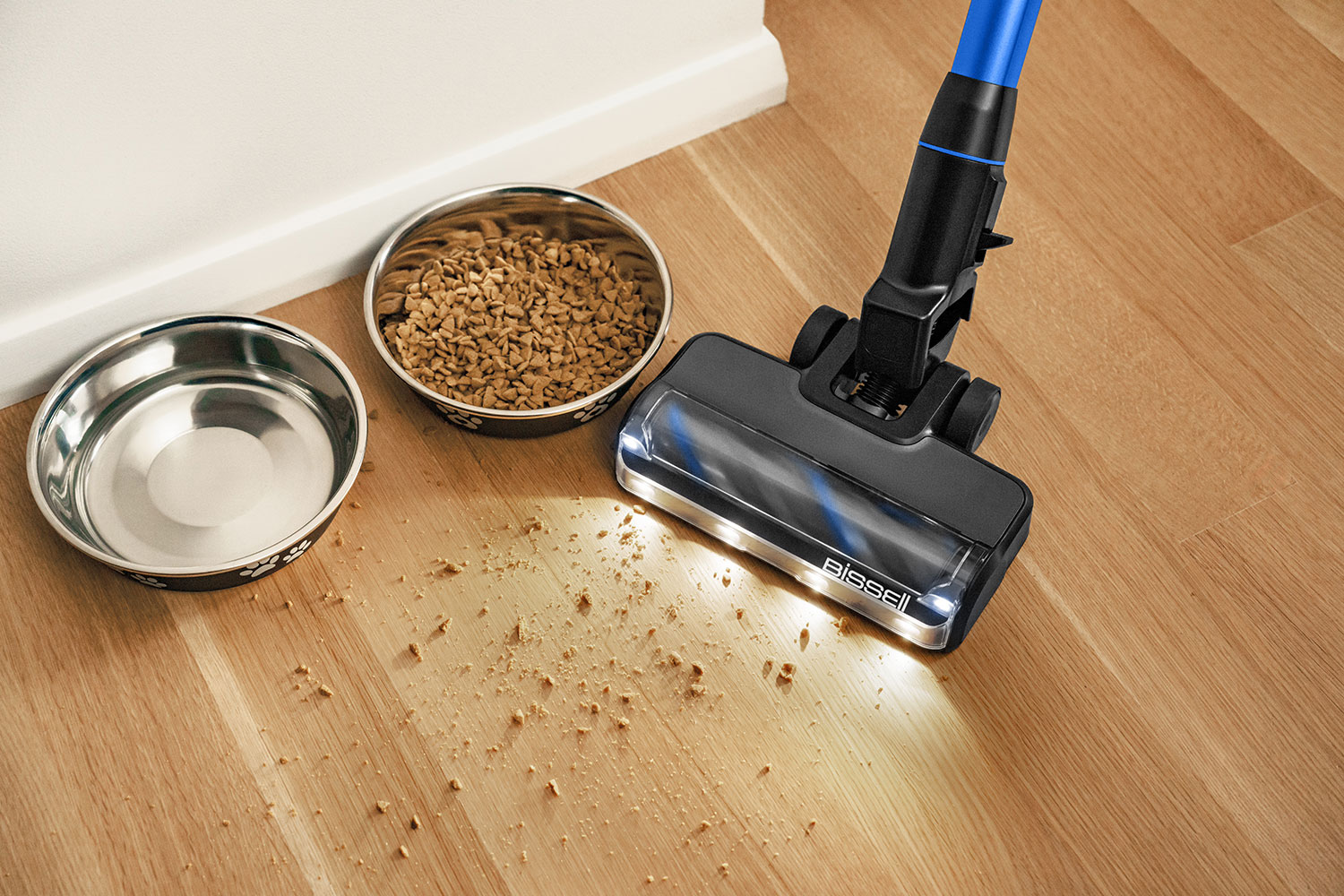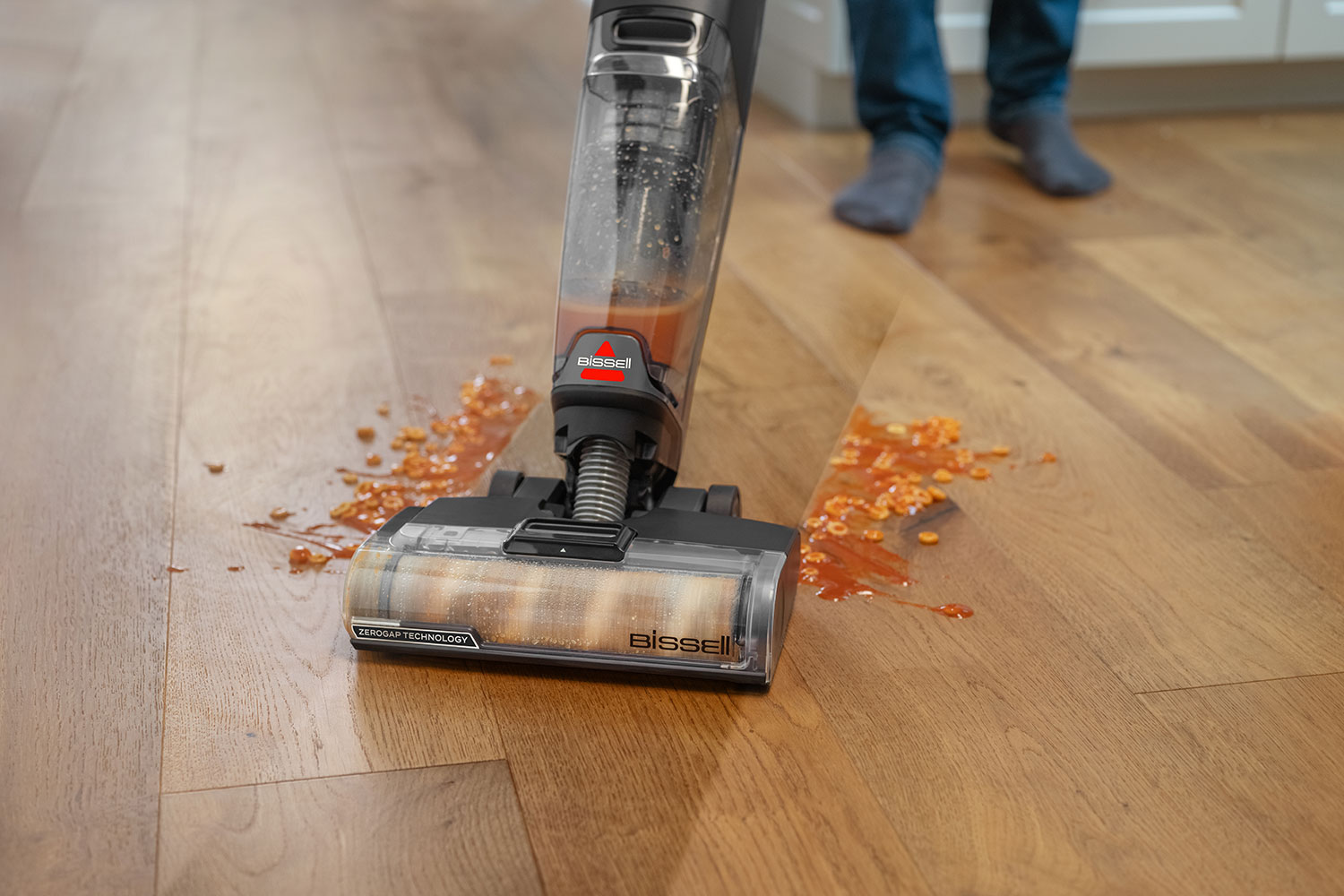How to Clean Hardwood Floors
Hardwood floors enhance the elegance of any home, but maintaining their beauty requires consistent care. Dirt, dust, and debris can dull the finish and lead to scratches, making routine cleaning essential for long-term durability. In our step-by-step guide, you’ll learn how to best clean hardwood floors with expert advice on how to maintain their shine and longevity.

Overview of cleaning methods
You’ll want to use different floor cleaning methods, depending on your needs – from daily upkeep to deep cleaning. For example, you can do a light, daily clean of hardwood floors with a dry mop, vacuum, or broom, while deep cleaning sealed wood flooring calls for a vacuum and a wet mop to target stuck-on messes and grime.
This expert hardwood floor cleaning guide will walk you through:
- daily cleaning techniques for sealed hardwood floors
- methods for giving sealed hardwood floors a deeper clean
- the best tools and for cleaning hardwood floors
- stick vacs such as the PowerClean® FurFinder™ 200W Stick Vac easily glide over all types of hardwood floors
- on sealed hardwood floors, spin mops and wet dry vacs such as CrossWave® machines, which vacuum and mop at the same time, give you a deeper clean
- common hardwood floor cleaning mistakes to avoid
Preparing to clean hardwood floors
Cleaning your hardwood floors can be simple, but you do need to take a few steps to get ready. Follow along to set yourself and your floors up for success.

Determine the type of flooring you have
The type of wood flooring in your home dictates the cleaning methods you can use on it. Generally, hardwood flooring falls under two categories: sealed or unsealed. One DIY way to tell if your floors are sealed or unsealed is to drop a small amount of water in an inconspicuous area. If the water beads up, the floor is sealed. If your floor absorbs the water, it is unsealed. However, it is recommended to check with your flooring manufacturer to be sure.
Sealed hardwood floors
- Commonly includes solid, engineered, and parquet flooring. Most hardwood floors today come from the factory sealed.
- Compatible Tools: CrossWave® wet dry vac mops are usually safe on sealed wood floors; steam mops may be used cautiously if the manufacturer allows (typically steam should not be used on vinyl floors).
- Cleaning Tips: Use water-based cleaners sparingly and avoid soaking the surface.
Unsealed hardwood floors
- Typically found in reclaimed or older parquet/bamboo flooring.
- Compatible Tools: Vacuum only – you don’t want to get floors wet during cleaning.
- Cleaning Tips: Stick to dry methods to prevent water absorption and damage.
To be absolutely sure your floors are sealed, check with your manufacturer. They may also have recommendations on the best way to clean your floors.
Clear the area
Remove rugs, furniture, and other obstacles that are in your cleaning path. This step ensures complete access to the floor, reducing the risk of missing dirt in corners or under heavy items.
Assess the floor condition
Inspect your hardwood floors for scratches, worn finishes, or stains. Identifying high-traffic areas such as entryways and hallways allows you to focus your efforts effectively. Experts recommend testing cleaning solutions on an inconspicuous area to ensure they don’t damage the floor finish.
Daily cleaning routine
Daily cleaning is an excellent way to maintain the beauty of your hardwood floors, preventing dirt and debris buildup while also protecting your floor’s finish. Set aside a few minutes each day to follow these expert-recommended quick cleaning tips.
Spot clean spills and stains
When a spill or stain occurs, spot clean immediately for the best results. Various household accidents can damage your hardwood floors if they’re not addressed quickly, from pet urine stains to coffee, wine, and standing water. The cleaners you use will depend on whether your floor is sealed or unsealed.
Materials needed:
- Paper towels
- Microfiber cloth
- Hardwood floor formula
- Wet dry vacuum, spin mop, or traditional mop
Step 1: Blot spills immediately
If you’re dealing with a recent spill, start by blotting the area with a clean paper towel or cloth. Cleaning messes as they’re made prevents liquids from setting deeper into your hardwood floors, which can cause warping or damage.

Step 2: Spot clean with cleaning solution
After blotting up the spill, assess your floor’s finish before spot cleaning.
- To spot clean unsealed floors: Use a lightly dampened cloth to gently wipe the area. Some unsealed floor manufacturers may recommend using an oil, such as linseed or jojoba, to wipe away grime and messes. Never soak the wood or scrub it, as this can further set the stain. Avoid excess water or soaking the floor, harsh chemicals, and abrasive scrubbing.
- To spot clean sealed floors: Use a hardwood floor cleaner with a microfiber mop or cloth. Or, especially for pet messes or sticky spills, a wet dry vacuum can provide targeted cleaning. Pair your CrossWave®OmniForce™ Edge Wet Dry Vac with Wood FloorFormula for CrossWave® & SpinWave® to remove tough spills and stains. Avoid excess water, harsh abrasive, and ammonia-based cleansers.
Step 3: Dry floors immediately
If you use a traditional mop, you’ll need to dry your hardwood floors immediately after cleaning. Hardwood floors are prone to warping and swelling when exposed to excess moisture for an extended period.
A wet dry vacuum or spin mop, which are safe to use on sealed hardwood floors, ensures excess water is never left behind.
Weekly cleaning routine
Weekly hardwood floor cleaning is just as important as daily maintenance, allowing you to target general wear and tear that builds up over time.
Remove debris and dust
Using a stick vac or vacuum cleaner is the easiest and most effective way to remove everyday dry messes from hard wood floors. You can also use a broom and dustpan to remove loose dirt and debris from the surface of your hardwood floors.
Materials needed:
- Vacuum cleaner, stick vac, or broom and dustpan
Step 1: Move furniture
Remove any easy-to-relocate furniture or area rugs in the space you are cleaning. This allows you to get a full clean, without interruption.
Step 2: Use a stick vac, vacuum, or broom
For the best results, use a vacuum or stick vac, such as the PowerClean® FurFinder™ 200W Stick Vac to suck up any dirt and grime on the floor and hiding in the wood grain or crevices. If you have a CrossWave® OmniForce™ Edge Wet Dry Vac you can use it in Dry Only Mode to complete this step. You can also sweep the floor with a broom, using a dustpan to collect the debris.

Step 3: Focus on high-traffic areas
As you navigate the room, pay extra attention to high-traffic areas. These include the common paths you and your family walk to get from one room to another, such as hallways, entryways, around the kitchen island, and in front of your couch.
Step 4: Move furniture back
Empty your vacuum and move all furniture and area rugs back to their original position.
Monthly floor washing routine
Each month, give your hardwood floor a deep clean. Washing hardwood floors each month removes embedded dirt and grime, prevents staining, reduces allergens, and preserves your floor’s finish. Follow these expert tips on how to best wash hardwood floors as part of your floor-washing routine.
Choose the right cleaner
Begin your monthly cleaning routine by selecting the right cleaner. To deep clean hardwood floors, a vacuum and a spin mop or a wet dry vacuum can help you save time and get the deepest clean.
Materials needed:
- CrossWave® wet dry vacuum or stick vac and a spin mop or traditional mop
- Hardwood floor cleaner
- Optional: Hardwood floor wax
Step 1: Read manufacturer’s instructions
Always review the manufacturer’s instructions before cleaning your hardwood floors to prevent damage. Floor washing is only recommended for sealed hard floors.
Step 2: Move furniture
Take time to move all furniture from the area you’re deep cleaning, such as tables, chairs, rugs, and home décor.
Step 3: Vacuum
Vacuum your floors to remove all loose dust, dirt, grime, and debris. You can use an upright or stick vacuum, such as the PowerClean® FurFinder™ 200W Stick Vac, which comes with FurFinder™ Headlight Technology to illuminate the area you’re cleaning.
Or, combine steps 3 and 4 by using a wet dry vacuum such as the CrossWave® OmniForce™ Edge Wet Dry Vac to vacuum and mop at the same time.

Step 4: Wash floors
Wash your sealed hardwood floors with a spin mop or a wet dry vacuum. We recommend the CrossWave® OmniForce™ Edge Wet Dry Vac because it cleans floors all the way to the baseboards. Move in the direction of the wood grain and avoid using excess water to prevent warping or swelling.
If you are using a traditional mop, wring the mop before cleaning then speed up drying by going over the floor with a dry mop or cloth. If the area is still wet, use a fan or open the windows.
Step 5: Wax floors (optional)
Use a wax designed for your floor type to polish or buff your floors to restore their shine.
Step 6: Move furniture back
Complete your monthly hardwood floor cleaning routine by moving all furniture and area rugs back to your preferred layout.
Preventive maintenance tips
To make cleaning hardwood floors easier, take preventive measures that protect your floors from spills and grime.
Use area rugs and mats
Place rugs in high-traffic areas and use floor mats at entrances to minimize dirt and prevent scratches.
Implement a shoes-off” policy
You may consider making your home “shoes-free” to prevent extra grime from entering the space.
Protect the floor from furniture
Add felt pads under furniture legs and avoid dragging heavy items across the floor. Scuffs and scrapes can be difficult to remove or fix.
Common cleaning mistakes to avoid
Wood, while naturally beautiful, can be extremely sensitive, especially if it’s unsealed. Keep these common hardwood cleaning mistakes in mind to prevent damaging your floors.
Over-wetting the floor
Too much water can cause irreversible damage to hardwood floors. Always use a lightly damp mop and dry your floors after cleaning. Or use a wet dry vac or spin mop, which dole out limited amounts of liquid.
Using harsh chemicals
Avoid abrasive cleaners that can strip the finish or leave residue. Additionally, stay away from DIY cleaners, as these can cause reactions that further damage your floors.
Ignoring manufacturer instructions
Following guidelines specific to your floor type will ensure proper care and improve your floor’s longevity.
Conclusion
Regular cleaning of hardwood floors is essential to maintaining their beauty and longevity. Understanding how to clean hardwood floors ensures you protect their finish from spills, stains, and grime. Daily spot cleaning prevents stains, while weekly cleaning with a vacuum allows you to target dust and debris at surface level and in cracks and crevices. Deep cleaning hardwood floors monthly with a wet dry vacuum or a vacuum and spin mop remove embedded messes while restoring the shine. However, it’s important to avoid common mistakes, such as using too much water, which can cause your hardwood floors to warp, stain, or swell. By following these best practices and staying consistent with your cleaning routine, you can keep your hardwood floors looking pristine for years to come.
Frequently asked questions
What is the best thing to clean hardwood floors with?
The best way to clean hardwood floors depends on your floor’s finish. For sealed hardwood floors, a wet dry vacuum, such as the CrossWave® OmniForce™ Edge Wet Dry Vac, tackles dirt and grime with ease. For unsealed hard floors, the PowerClean™ FurFinder™ 200W Stick Vac or a dry mop can pick up dirt and debris without getting your floors wet.
Should you mop a wooden floor?
Yes, you can use a mop on a wooden floor. For sealed hardwood floors, a wet dry vac, such as the CrossWave® OmniForce™ Edge Wet Dry Vac , can vacuum, mop, and dry your floors in one go. Only use a dry mop with a microfiber cloth for unsealed hard floors, as water and cleansers can damage the wood.
Is dish soap safe for wood floors?
No, it’s not recommended to use dish soap to clean hardwood floors. While both floor and dish cleaning formulas contain surfactants, which are the cleaning agents used to remove oil and grease, dish soap foam leaves a sticky residue on floors which can attract dirt and debris. A formula designed specifically for floor cleaning works on more types of messes – including tracked-in mud – and is designed to leave a smooth, clean finish